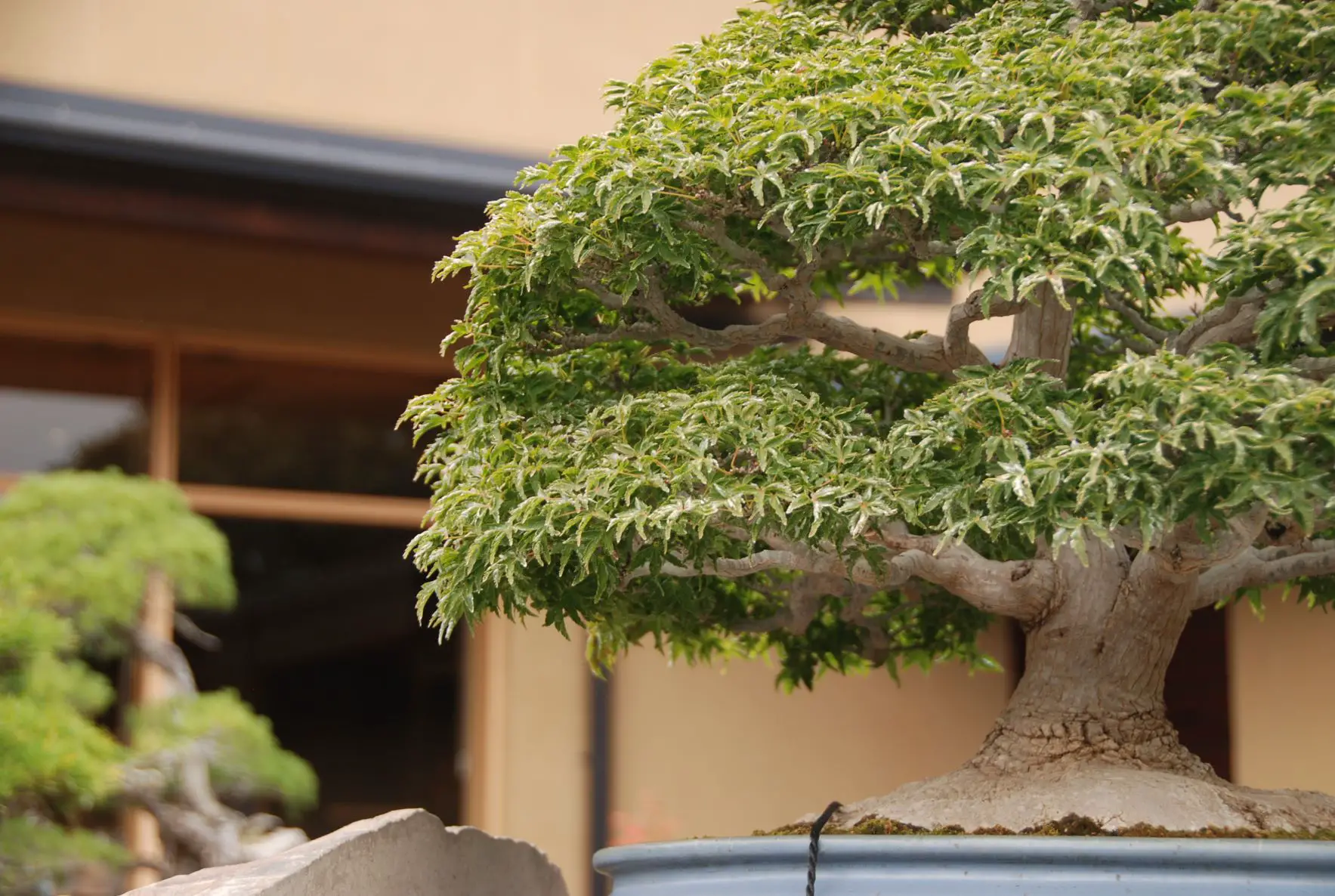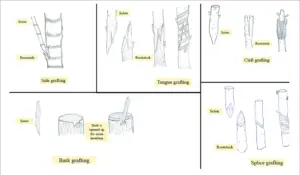Best way to propagate Japanese maple
The best way to propagate Japanese maples is by seed or cuttings if you want to propagate in numbers. The process is beginner friendly and can be done without expertise or special equipment.
Seed propagation
Seed propagation of Japanese maples is fairly simple and can be done by almost anyone. Seeds just need to be soaked in water overnight before being sowed in spring. You do not need to scratch the seed coat. It then takes about 1 to 3 months for the seedlings to come out∗.
∗ If the seeds are too dried up, it may take two years to germinate.
If you are interested in Japanese maple seedlings care, please check the following post.
Propagation by cuttings
Propagation of Japanese maples by cuttings can be quite successful depending on the cultivars. Cultivars of Acer amoenum such as Kotohime and Kiyohime Japanese maples are ones that are suitable for cuttings, whereas the propagation of variegated leaf cultivars like Uki-gumo needs skills and expertise.
Japanese maple propagation methods
There are four ways to propagate Japanese maples.
- Seeds
- Cuttings
- Layering
- Grafting
Propagation by seed
What is propagation by seed
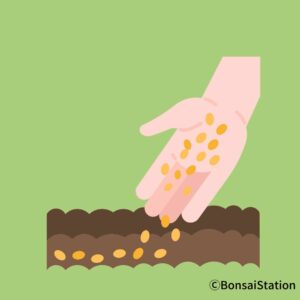
Seed germination is a simple process where seeds are sowed, then they germinate, develop and grow into new plants.
Advantages of propagation by seeds
Normally, it is much easier to prepare seeds in large amounts. You are then able to start more new trees, which is better because some of them will die while growing.
Disadvantages of propagation by seeds
Trees grown from seed will not be true to the parent; they will be different from them and from each other because they inherit the genetic properties of both parents, bringing genetic diversity that you may not want.
For most cases, of course, the seedlings are quite similar to the parent tree and would not be that different from each other either.
Propagation by cuttings
What is propagation by cuttings
A cutting is a method of plant propagation using a section of a plant that forms roots (or shoots). Cuttings can be classified according to the part of the plant removed to form the cutting: leaf, stem and root.
Japanese maples can be propagated by stem cutting.
Advantages of propagation by cuttings
New trees grown from cuttings will be identical to the parent tree. If you choose a parent tree that has dense foliage, fancy leaves and beautiful bark, you can all have those characteristics in your new trees as well.
Disadvantages of propagation by cuttings
Because the new trees are clones, they may all die off from a single disease/pest or change in the environment. Genetic diversity enables trees to respond more effectively to adverse conditions. Some are more resistant to parasites or pathogens than others, limiting the risk of their prevalence. Or some are more cold-/ heat-resistant than others.
Propagation by grafting
What is grafting
(Source: Fig. 2 in Rasool, Aatifa & Mansoor, Sheikh & Ahmad, Parvaiz. (2020). Mechanisms Underlying Graft Union Formation and Rootstock Scion Interaction in Horticultural Plants. Frontiers in Plant Science. 11. 10.3389/fpls.2020.590847. )
Grafting is a method in which plant parts from different/same plant are joined together to grow and heal as one plant. There are a few grafting methods such as side, tongue, cleft, bark and splice grafting, of which side and cleft grafting are the most popular grafting technique used for Japanese maples.
Four conditions must be met for grafting to be successful: the scion (part of the tree to be propagated) and rootstock must be compatible; each must be at the proper physiological stage; the layers of the scion and stock must meet; and the graft union must be kept moist until the wound has healed.
Advantages of grafting
Grafting can make a different cultivar when new, more desirable characteristics come out from a part of a tree and grafted onto another part of the tree or an entirely different tree.
Grafting can also produce more desirable tree shapes in bonsai. For instance, you can make a branch in the trunk where you wish it would be by fusing a branch in the upper part of the tree onto the trunk.
Disadvantages of grafting
You cannot propagate in numbers by grafting. Grafting is also not as simple as sowing and cleft grafting of Japanese maples is known to be relatively difficult unless you know when and how to do it properly.
Propagation by layering
What is layering
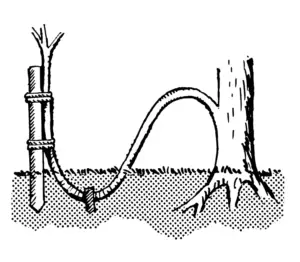
Tip layering
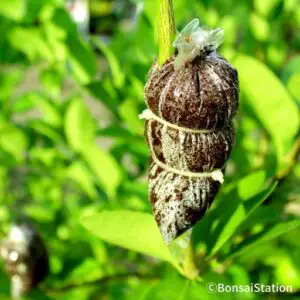
Air layering
Layering is a method of plant propagation where the new plant remains at least partially attached to the parent plant while it forms new roots. Methods of layering include tip, air and mound, of which tip and air layering are used for Japanese maple propagation.
Advantages of layering
One major benefit of propagating Japanese maple by layering is that it has a high success rate. Because the new plant is still attached to the parent tree, layering prevents the water stress and carbohydrate shortage that often plague cuttings.
It is also very simple to perform and can be done without any special equipment or facility.
Disadvantages of layering
By layering, only a few plants from each parent tree can be propagated because an entire branch of the parent tree is often needed to form a single new plant. If it is overly done, the parent tree is left without any branches but the trunk.
Because of this, layering should be done when seeding or cutting is impractical or ineffective. Or it can be done when you want to make a good-styled bonsai tree out of a tree planted in the ground or from a parent bonsai tree.
—–
Reference
Plant propagation (University of Maine Cooperative Extention)

